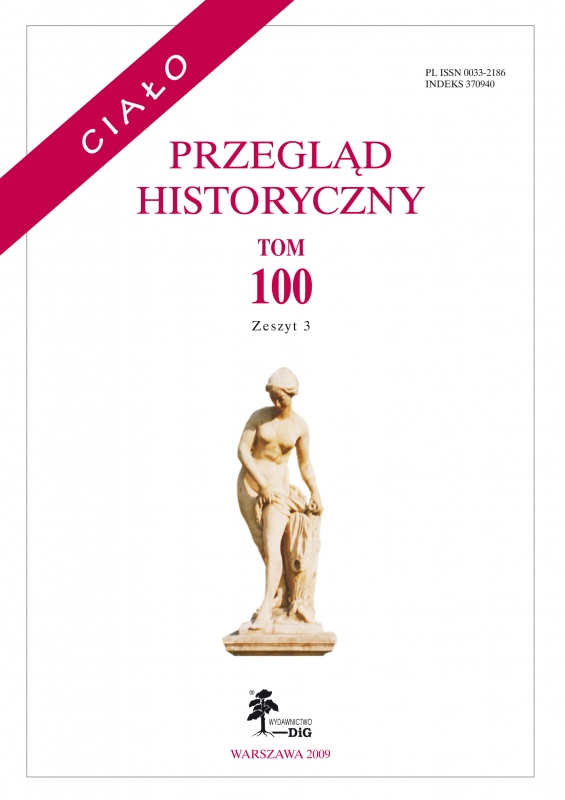L’abito e il corpo dei religiosi nelle fonti agiografiche. Il mantello come simbolo di identità
Abstrakt
The habit and the body of religious men in hagiographic sources. The cloak as an identity symbol
The aim of this essay is to investigate into the complex relationship system among the body, the clothing and the religious universe. In particular, it intends to focus the attention on the theme of the cloak as an identity symbol to express a definite religious option. On this theme entailing a great hagiographic, theological and symbolic interest, an excursus offering the opportunity to treat a series of problematic issues relating to the relationship between habit and sanctity and the concept of clothing as a sign system can be made in the Christian tradition. Clothing, in fact, is a system of signs, a language, which is naturally strictly related to the body.
In the action of getting dressed, there is a circular relationship between an individual and society. With respect to the body, clothing is not only something exterior. Clothes are the product and the reflection of a habitus, of a social and cultural tradition in which an individual is immersed and which an individual has a confrontation with.
The monks’ habit does not in any way elude this type of dynamics, on the contrary it can often become an obvious example of it, above all with respects to saints. Just think of hermits and of the fathers of the desert who build on their body their own spiritual path and make of their nakedness and their wildness, produced and represented by clothes of rough hides, an element of immediate and recognizable protest against society and their difference from it.
Clothing is a marker, a factor of immediate distinction and, broadly speaking, it plays a relevant role in every sacred rite and its meanings enrich the ritual symbolism. The example of Martin of Tours is paradigmatic: through the gesture of taking off his own cloak for another man, he symbolically ratifies the institutionalization of a new model of Christian behaviour. In this way, the habit becomes an expression of charity, a new Christian concept that catches us unprepared. The symbolism of Martin’s cloak is similar to the prophet Elijah’s. Elijah remains an archetype for anyone intending to live a spiritual life and his cloak is a fundamental reference, not only symbolic but also concrete, in the ascetic and contemplative thought and meditation. Throughout the Middle Ages, the inheritance of Elijah’s cloak constitutes an ineluctable point of reference for generations of hermits, saints and monks, starting from the first fathers of the desert to the Italian–Greek champions of asceticism, passing through Romualdo and Pier Damiani’s reformed eremitism, down to the order of the Carmelites, for whom the material, concrete coincidence, not only symbolic, between the habit and the spiritual and identity–making core of the order is crucial.

